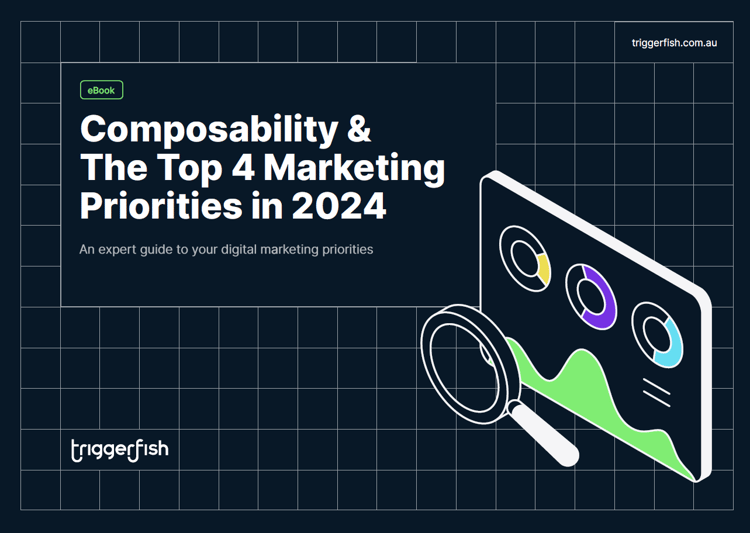Welcome to part 1 of our 5-part series that will explore the composable strategies and the top 4 marketing priorities in 2024.
With the current prominence of composable technologies, Chief Marketing Officers (CMOs), Chief Technology Officers (CTOs), and Chief Information Officers (CIOs), face a crucial business question: Are the technology-driven benefits for composable technologies aligned with business and marketing goals?
In the ever-evolving landscape of digital business strategies, composable strategies have emerged as a compelling approach to organisations seeking flexibility and adaptability. However, the successful execution of composable strategies is not a one-size-fits-all solution and demands a deliberate approach from CMOs. According to Gartner, while composability is gaining traction, not all businesses are well-positioned to harness its full potential. This article will explore the five levels of composability readiness and the careful considerations CMOs must make when contemplating the adoption of a composable strategy.
The Five Levels of Composability Readiness:

- Level 1: Identifying Target Market and Client Segments: Before embarking on a composable strategy journey, CMOs must ensure clarity in identifying their target market and client segments. Understanding the needs and preferences of these segments lays the foundation for effective customisation and adaptation.
- Level 2: Achieving Differentiation: Having identified a solution to bring to the market, CMOs must assess their ability to differentiate from competitors. In a world inundated with options, standing out is imperative. A composable strategy should offer a unique value proposition that sets the business apart.
- Level 3: Building, Supporting, and Expanding Solutions: Beyond just delivering a solution, CMOs need to evaluate their capacity to build, support, and expand it over time. Scalability, sustainability, and adaptability are crucial factors to consider to ensure long-term viability.
- Level 4: Financial Viability: Composable strategies require investment. CMOs must assess whether their organisation can support this investment not only to achieve competitiveness but also to sustain profitability and fund future innovations.
-
Level 5: Pricing Model Support: An often-overlooked aspect is the ability of the business to support a pricing model that aligns with the value delivered by the composable solution. Ensuring a favourable pricing model is essential for market acceptance and sustainability.
Looking Ahead: Business and Marketing Priorities
At Triggerfish, we’ve identified the top 4 marketing priorities that are crucial for CMOs and organisations assessing composable technologies in 2024.
These include:
- Personalisation Effectiveness
- Data-Driven Engagement
- Strategic Budget Allocation
- Modernising Team Structure
We will be exploring the first of these priorities in our next article (part 2).
While the attraction of composable strategies is undeniable, CMOs must approach their adoption with careful consideration and strategic planning. By assessing composability readiness across the five levels explored above, businesses can position themselves for success in the dynamic landscape of modern marketing.
To continue reading about composability, download our eBook.





